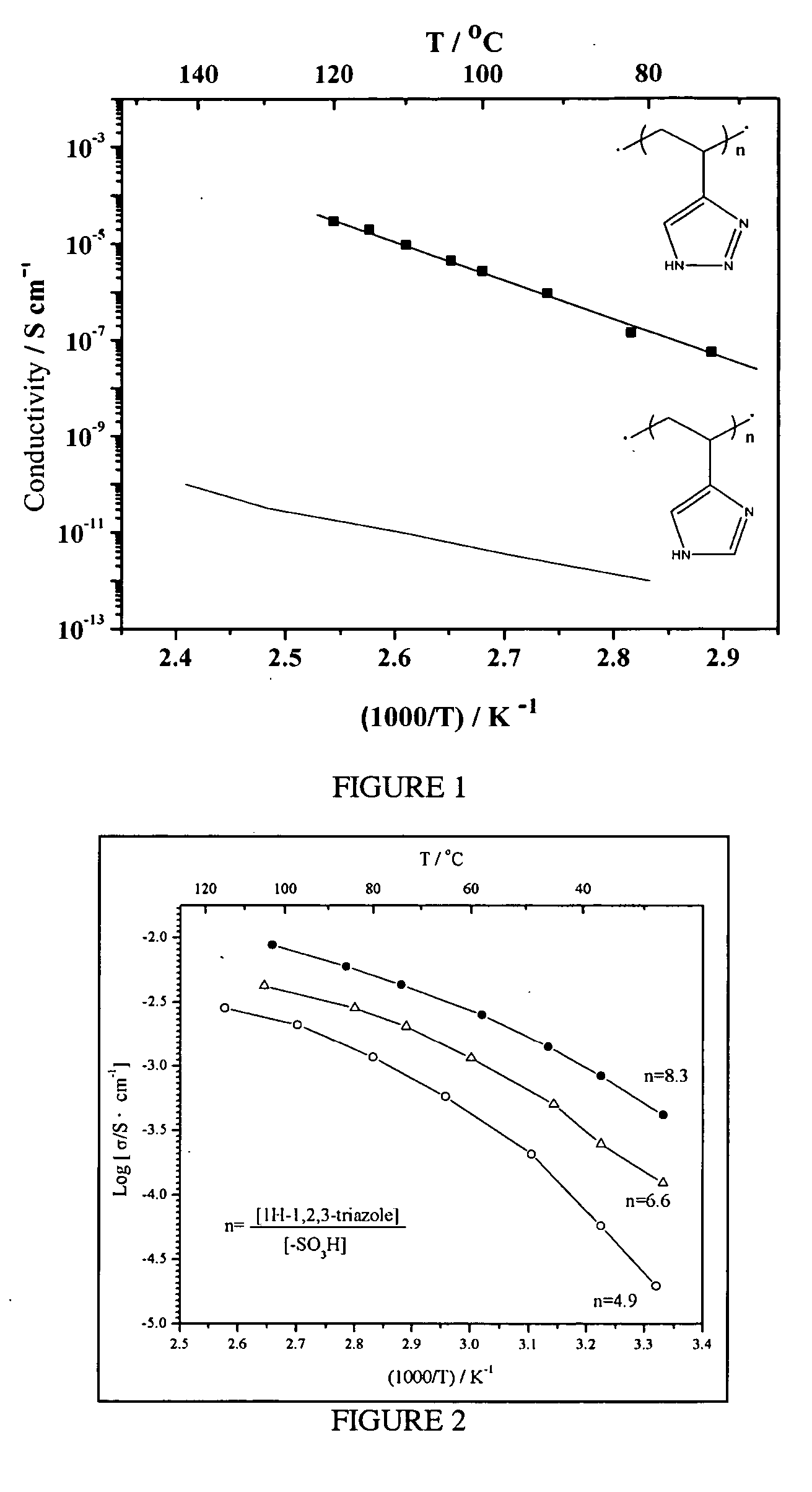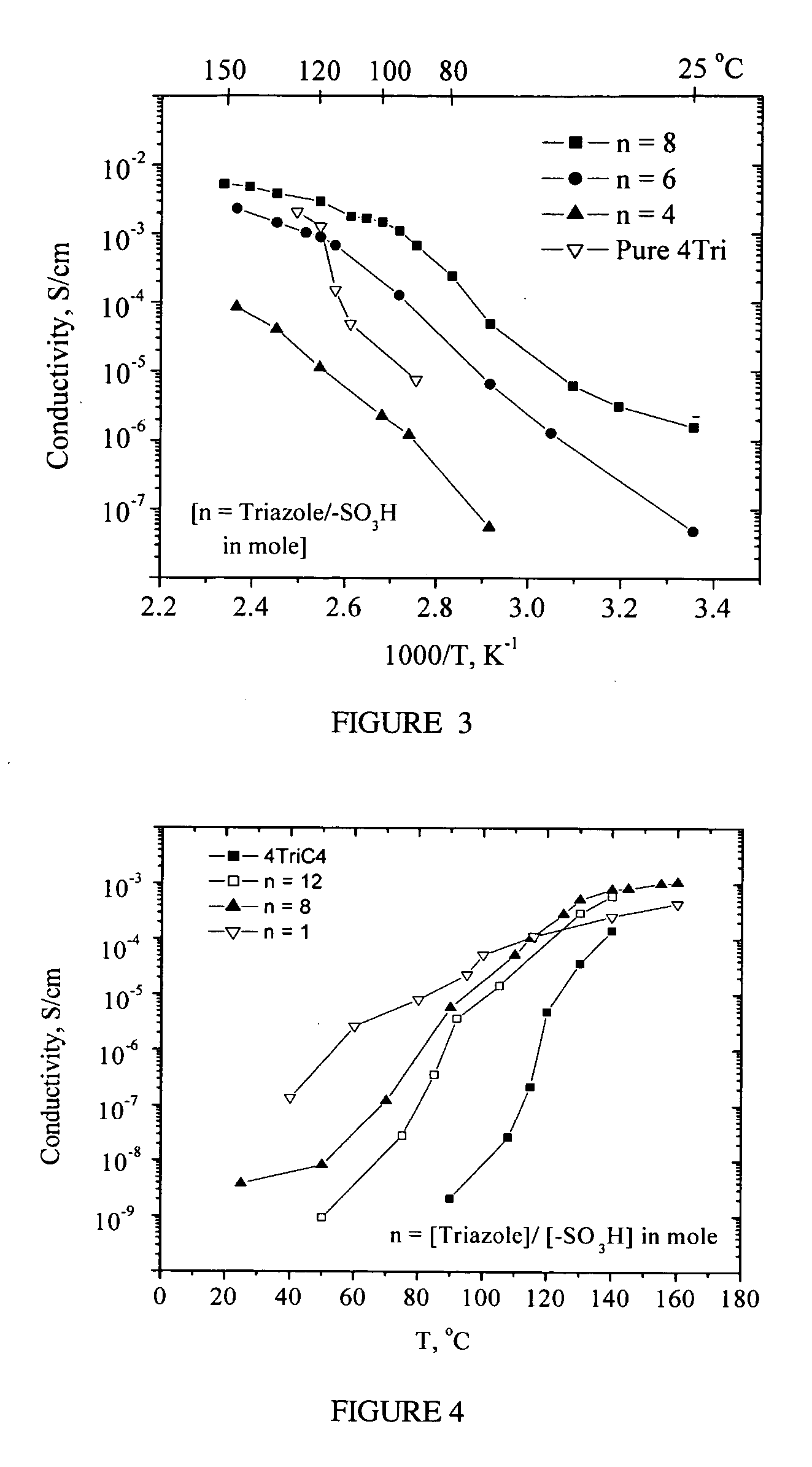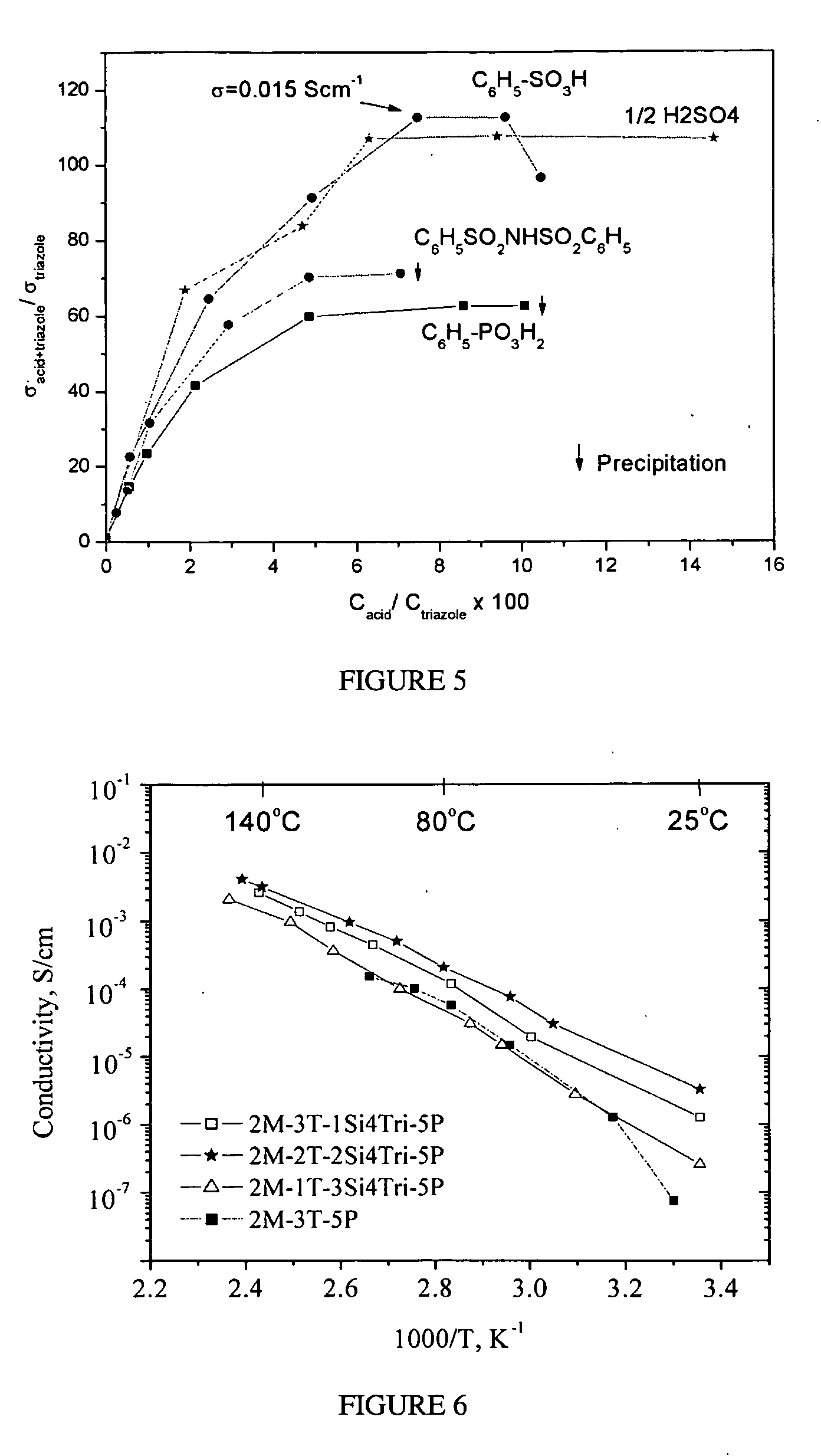Heterocycle grafted monomers and related polymers and hybrid inorganic-organic polymer membranes
a polymer and heterocycle technology, applied in the field of heterocycle containing compounds, can solve the problems of low proton conductivity over 100° c, widely used perfluorosulfonic polymers (mainly nafion®), and inadequate performance of existing membranes for many applications
- Summary
- Abstract
- Description
- Claims
- Application Information
AI Technical Summary
Benefits of technology
Problems solved by technology
Method used
Image
Examples
example 1
Synthesis of 2-(3-butenyl)-4-(trifluoromethyl)-1H-Imidazole (Scheme 8)
[0062] In a solution of 3-dimethylhydrazone-1,1,1-trifluoro-2-propanone (1 mmol) and NH4OAc (1 mmol) in MeOH (6 ml), 4-pentenal (2 mmol) was added. The mixture was stirred for 1 h at room temperature, and then, at 50° C. for 48 hours. After cooling, 100 ml CH2Cl2 was added, and washed with saturated Na2CO3 solution. The solvent was removed in vacuum. The residual was separated with silica gel column (benzene / AcOEt=1 / 1). Yield: ˜50%.
example 2
Polymerization of 2-(2,6-dimethyl-5-heptenyl)-4-(trifluoromethyl)-1H-imidazole (Scheme 9)
[0063] To a flask fitted with a stir-bar were added 2 g of 2-(2,6-dimethyl-5-heptenyl)-4-(trifluoromethyl)-1H-imidazole (synthesized with the method as described in J. Org. Chem., 1988, 53, 129), 10 mg of AIBN and 10 ml of DMF, The solution was degassed and placed in an oil bath at 70° C. for 3 h. The material was removed and the solvent removed by evacuation to yield the product polymer. To form the polymer membrane, the polymer was re-dissolved in DMF and cast to the Teflon plate, followed by drying at T=80° C. in the oven. The proton conductivity was from 10−5 S / cm to 10−3 S / cm in the range 80° C. to 160° C. in an anhydrous state.
example 3
Polymerization of 2-(3-butenyl)-4-(trifluoromethyl)-1H-imidazole (Scheme 10)
[0064] To a flask fitted with a stir-bar were added 2 g of 2-(3-butenyl)-4-(trifluoromethyl)-1H-imidazole, 10 mg of AIBN and 10 ml of DMF. The solution was degassed and placed in an oil bath at 70° C. for 3 h. The material was removed and the solvent removed by evacuation to yield the product polymer. To form the polymer membrane, the polymer was re-dissolved in DMF and cast to the Teflon plate, followed by drying at T=80° C. in the oven. The proton conductivity was from 10−5 S / cm to 10−3 S / cm in the range 80° C. to 160° C. in an anhydrous state.
PUM
| Property | Measurement | Unit |
|---|---|---|
| pKa | aaaaa | aaaaa |
| pKa | aaaaa | aaaaa |
| pKa | aaaaa | aaaaa |
Abstract
Description
Claims
Application Information
 Login to View More
Login to View More - R&D
- Intellectual Property
- Life Sciences
- Materials
- Tech Scout
- Unparalleled Data Quality
- Higher Quality Content
- 60% Fewer Hallucinations
Browse by: Latest US Patents, China's latest patents, Technical Efficacy Thesaurus, Application Domain, Technology Topic, Popular Technical Reports.
© 2025 PatSnap. All rights reserved.Legal|Privacy policy|Modern Slavery Act Transparency Statement|Sitemap|About US| Contact US: help@patsnap.com



